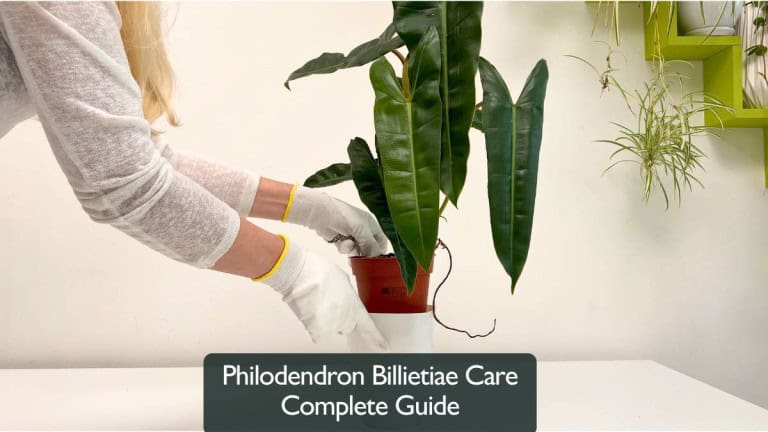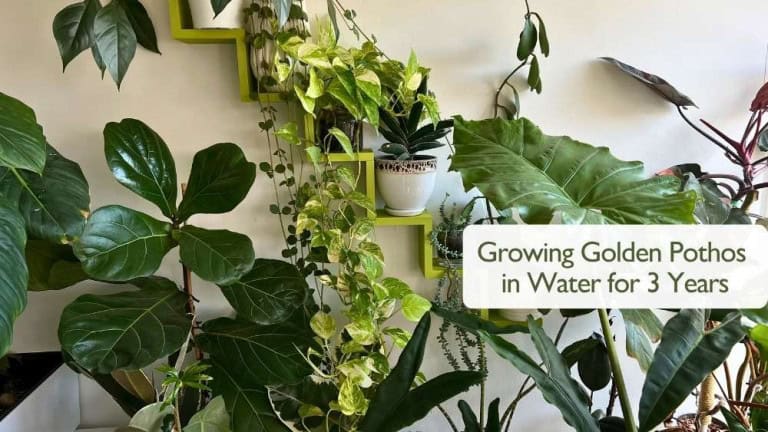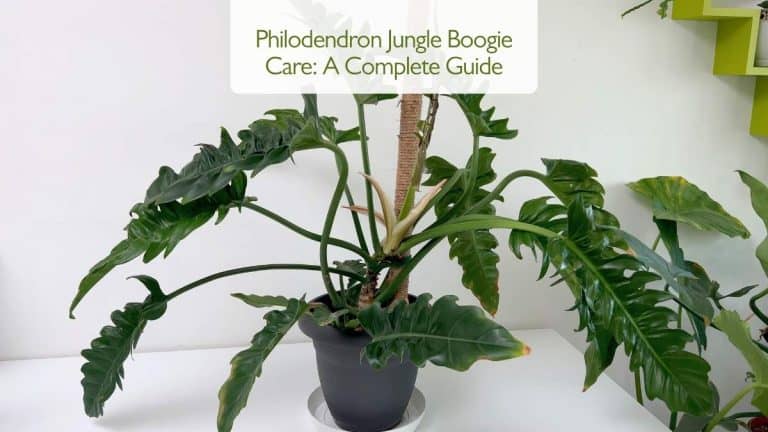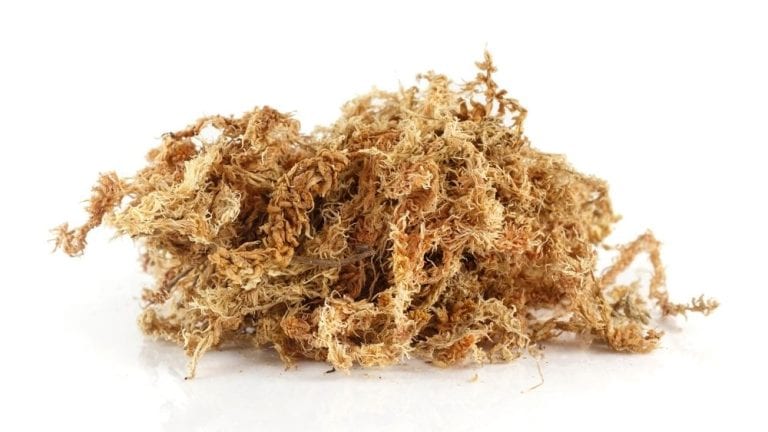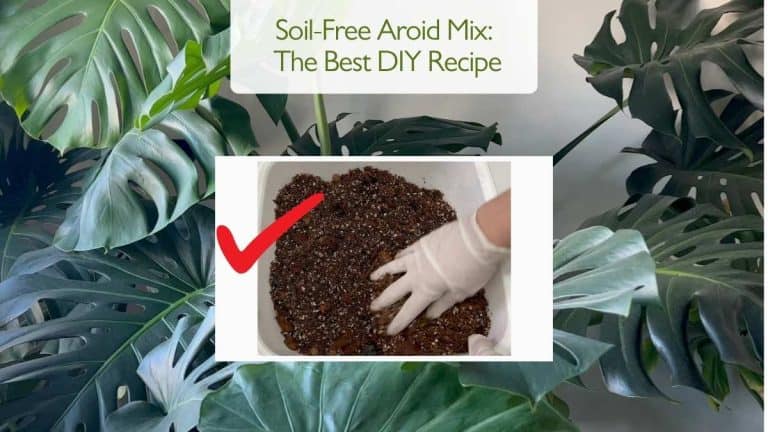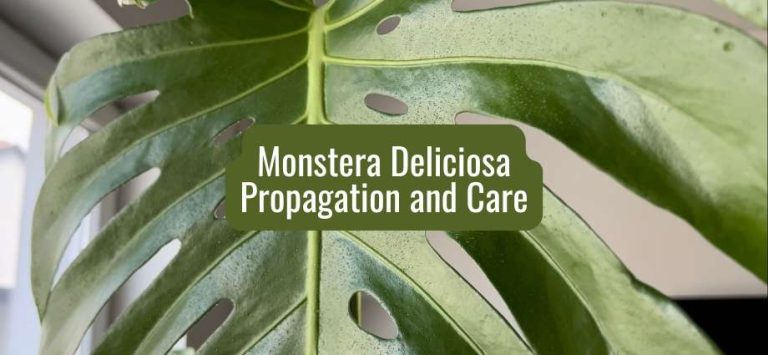Philodendron Billietiae Care: Complete Guide for Healthy Growth
If you’re a fan of rare houseplants, Philodendron billietiae care is something you’ll definitely want to master. Known for its long, narrow, wavy leaves and striking orange petioles, this tropical climbing philodendron is one of the most eye-catching plants you can grow indoors. While it looks exotic and dramatic, caring for Philodendron billietiae is manageable once you understand its needs. This complete guide will show you everything you need to know about Philodendron billietiae care so you can enjoy this rare plant at its best.
👉 For visuals, watch the video below where I share my personal Philodendron billietiae journey and explain every step of care in detail:
Click here to watch the video on YouTube
Origin and Natural Habitat
Philodendron billietiae originates from French Guiana and northern Brazil. In the wild, it grows close to the forest floor or climbs trees with the help of aerial roots. In its natural environment, this plant can reach impressive sizes, with leaves that grow up to three feet long. By learning about its habitat, we can understand the importance of providing warmth, moisture, indirect light, and climbing support indoors.
Understanding its background makes Philodendron billietiae care much easier indoors.
Distinctive Features
One reason many collectors search for Philodendron billietiae care tips is because of its iconic orange petioles and elegant leaves. This philodendron is instantly recognizable. Its long, leathery leaves are glossy and deep green, with wavy edges that add elegance. The striking orange to yellow petioles, which connect the leaves to the stem, bring a vivid contrast that makes the whole plant stand out. In addition, the plant’s climbing nature allows it to produce larger leaves as it grows vertically, making it an impressive centerpiece in any collection.
Light Requirements
Light plays a crucial role in Philodendron billietiae care. The plant thrives in bright, indirect light that mimics the filtered sun of the rainforest. Too much direct sunlight will scorch the leaves, while insufficient light causes smaller growth and stretched stems. A south or east-facing window with sheer curtains works perfectly, and if your home lacks natural brightness, a grow light can easily make up the difference.
Proper lighting is a cornerstone of Philodendron billietiae care, especially if you want larger, healthier leaves.
Watering Needs

Watering is one of the most important elements of Philodendron billietiae care. The soil should be allowed to dry out slightly before the next watering, usually around the top two inches. When you water, do it thoroughly until excess moisture drains out of the pot, but never leave the plant sitting in water because that quickly leads to root rot. During winter, the plant grows more slowly, so reduce watering frequency. Yellowing leaves are usually a sign of overwatering, while limp leaves point to underwatering.
Getting watering right is central to successful Philodendron billietiae care, since this plant is sensitive to soggy soil. For more practical advice, you can also read my detailed guide on Houseplants Watering Tips
Humidity and Temperature
Since this philodendron is tropical, it loves warm and humid conditions. Ideally, humidity should stay around 60 to 80 percent. Without it, the edges of the leaves may turn brown and new growth can become smaller. Using a humidifier, grouping plants together, or placing the pot on a pebble tray are all effective ways to maintain humidity. The temperature should remain between 65 and 85°F (18 to 29°C). Avoid exposing the plant to cold drafts, sudden changes in temperature, or hot dry air from heaters.
Stable conditions are key to steady growth. Stable humidity and warmth are non-negotiable parts of Philodendron billietiae care.
Soil Mix
Philodendron billietiae performs best in a chunky, well-draining soil mix. A blend of peat or coco coir, orchid bark, and perlite creates the right balance of aeration and moisture retention. Adding a small amount of activated charcoal helps prevent rot and keeps the mix fresh. This combination replicates the loose forest soil where the plant naturally grows and ensures the roots have plenty of oxygen.
Choosing the right chunky, airy soil mix is another detail that defines good Philodendron billietiae care. If you’d like to make your own at home, check out my guide on a Soil-Free Aroid Mix DIY, which is perfect for philodendrons and other aroids.
Fertilizing
Feeding the plant during its active season supports its lush growth. In spring and summer, a balanced liquid fertilizer diluted to half strength once a month is more than enough. As autumn approaches and the plant begins to slow down, fertilizing should stop until the following growing season. Giving extra nutrients when the plant is resting can lead to salt buildup in the soil, which burns roots and causes brown tips. To prevent this, flush the soil with clean water every few months.
Balanced feeding is a key practice in Philodendron billietiae care, but timing is just as important as nutrients. If you prefer natural options, take a look at my guide on Organic DIY Fertilizer for Houseplants, which works beautifully for philodendrons.
Repotting
One of the most overlooked aspects of Philodendron billietiae care is knowing when to repot and refresh the soil. Because this philodendron grows quickly, it will eventually need a larger pot. Repotting every one to two years in spring ensures the roots have enough space. Choose a container that is only slightly larger than the current one, as too much extra soil can hold water and increase the risk of rot. Always refresh the soil mix during repotting to provide aeration and nutrients. It’s best to avoid repotting in winter when the plant is resting, since recovery is much slower.
Staking and Support
Philodendron billietiae is a climber, and without support, it tends to sprawl and produce smaller leaves. Providing a moss pole, bamboo stake, or coco pole encourages the plant to grow upward and display larger, healthier leaves. Tie the stems loosely with soft plant ties so they can cling naturally. As the plant climbs, it will mimic its natural habit of attaching to tree trunks, resulting in a stronger and more attractive specimen.
Supporting its climbing growth habit is part of advanced Philodendron billietiae care, ensuring bigger leaves over time.
Pruning and Maintenance
Regular maintenance helps keep the plant at its best. Any yellow or damaged leaves should be trimmed away with sterilized scissors. Leggy growth can be cut back to encourage bushier foliage. Since dust often settles on large leaves, wipe them down with a damp cloth to keep them clean and shiny. Clean leaves not only look more attractive but also absorb more light, which is essential for photosynthesis. Regular cleaning and trimming are small but effective steps in Philodendron billietiae care.
Propagation
Philodendron billietiae can be propagated through stem cuttings, and the process is straightforward. Select a healthy stem with at least one node and an aerial root, then cut just below the node using sterilized scissors. Place the cutting in water or directly into moist soil, and keep it in a warm, humid environment. Within a few weeks, new roots will appear, and the cutting can be transferred to soil if it was started in water. This is one of the easiest ways to expand your collection or share the plant with friends.
Propagation is not just a fun experiment but also a valuable element of Philodendron billietiae care.
Common Problems and Solutions
Like most houseplants, Philodendron billietiae can face a few challenges. Yellow leaves are usually caused by overwatering, while brown edges indicate low humidity or excess fertilizer. If growth slows, the plant may not be receiving enough light. Drooping leaves often point to sudden changes in temperature. As for pests, spider mites, mealybugs, and aphids occasionally appear but can be controlled with neem oil or insecticidal soap.
By addressing these issues quickly, your plant will continue to grow strong and healthy.
Most issues can be solved quickly with the right adjustments in Philodendron billietiae care.
Final Thoughts
Mastering Philodendron billietiae care is all about creating the right balance of light, warmth, moisture, and support. Once these conditions are met, this rare tropical climber will reward you with dramatic foliage and steady growth. Whether you let it climb a moss pole or simply enjoy it as a potted statement plant, it will never fail to impress.
If you’d like to see the complete care process, check out my YouTube video above. And if you enjoy my plant content, don’t forget to subscribe to my channel for more detailed care guides and tutorials.
Related Topics
Explore More Philodendrons
If you enjoyed this guide and want to learn about other beautiful varieties, take a look at my full Philodendron Care Collection. There you’ll find detailed guides for different types of philodendrons, from popular ones to rare collector plants.
Explore More Music for Your Plants & Stay Connected!
Check out my Playlist: Music for Plants and find the perfect tunes to help your plants and yourself thrive.
Don’t forget to visit my YouTube Channel Plant House & Garden and subscribe — your support means the world to me!
Connect with me on social media for more plant care tips and music updates: Instagram | Facebook | X | Pinterest | Reddit | TikTok
Love plants? Love music? Don’t miss out on new updates — hit subscribe and follow now to keep your plants happy and your space vibrant!

